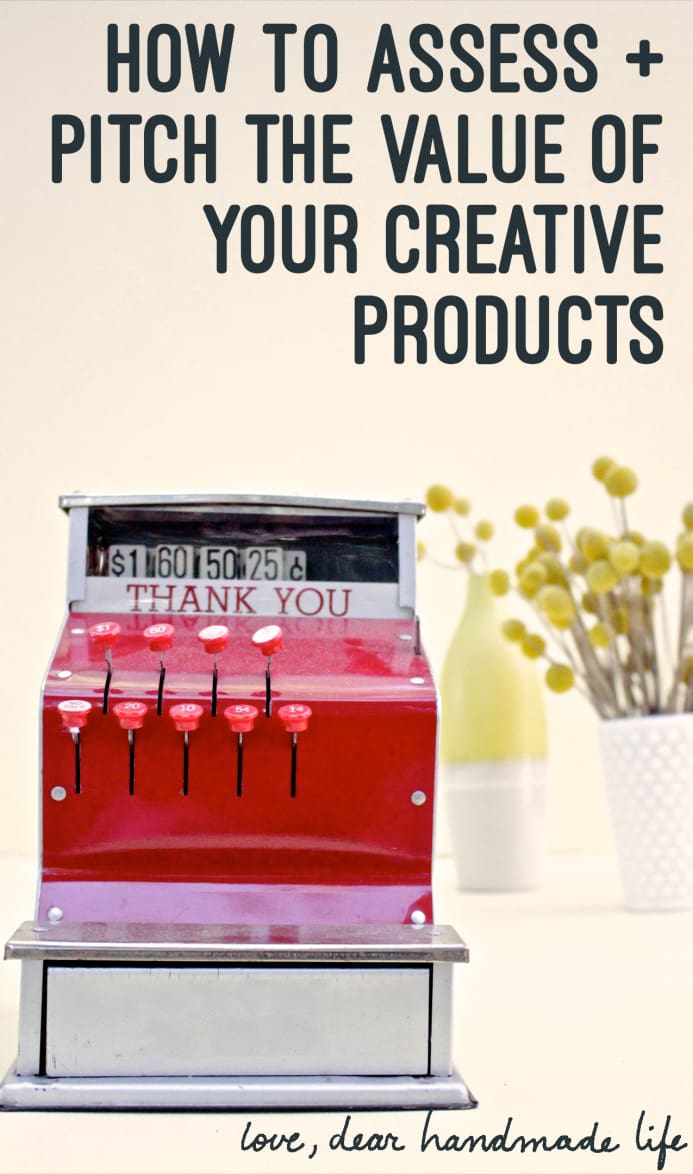How to assess + pitch the value of your creative products
 Do you value the creative work that you do and business you are building? “Of course I do!” you say to yourself, but do you know how to pitch and communicate that value to your customers? And finally, do your prices reflect that value?
Do you value the creative work that you do and business you are building? “Of course I do!” you say to yourself, but do you know how to pitch and communicate that value to your customers? And finally, do your prices reflect that value?
I’ve been thinking a lot about this issue because recently the company I work for, a 3D printing service and marketplace, repriced one of our most popular materials using a more accurate formula. While prices went down for the majority of our community of users, the price to create some particular designs increased dramatically. As a member of the Community team I spent nearly a week responding to questions about the change. As I corresponded with hundreds of creatives that create products with 3D printing, from model trains to jewelry to sculptures to DIY replacement parts, I noticed a pattern: it wasn’t that prices were getting too high, it was that many of our community members were not valuing themselves highly enough. Many designers on the site has been selling their custom creations for very cheap and were nervous about passing a higher price, even of a dollar or two, on to their customers.
So what does this mean for you? Across the board I noticed that the creative business owners using my company to produce their products were undercharging their customers and thus undervaluing their work. While 3D printing may sound like it has very little to do with other types of creative and handmade businesses, 3D printing is a way to create a custom, creative product. A 3D printed object is designed by a skilled model maker and reflects their creative vision. It is created one at a time and is infinitely customizable.
I’ve noticed this trend of undervaluing creative goods across platforms where creatives sell their work, whether in online stores like Etsy or in-person at craft fairs. Selling a product cheaply will not attract or retain customers – your customers are not buying a creative or handmade product because you are the cheapest source. There will always be a mass market store like Amazon or Walmart for inexpensive goods. Customers are seeking out handmade and creative products because they can get something unique or custom and to which they have an emotional or personal connection. As miniature furniture designer Kacie Hultgren, of Pretty Small Things, told other makers at a creative business conference I organized, “Don’t under price yourselves. Price yourself fairly to avoid a race to the bottom.”
Your prices don’t act in isolation. There is much guidance available for pricing your work – handbooks such as The Handmade Marketplace, 2nd Edition: How to Sell Your Crafts Locally, Globally, and Online and Grow Your Handmade Business: How to Envision, Develop, and Sustain a Successful Creative Business by Kari Chapin, and my book Grow: How to Take Your DIY Project & Passion to the Next Level and Quit Your Job!, can offer you some formulas and guidance to get started. However, beyond pricing, it’s important to communicate the value of what you are selling.
If you are selling your products online you need great photography and amazing descriptions to help underscore the value of your work. If you’re selling in-person you need to create an environment and have a pitch ready to help potential customers understand why what you create is valuable and unique. But how do you determine what’s valuable about your work?
Here are some ideas to touch on in your product descriptions, social media or conversations with customers that can help communicate the value of what you make:
How is it made? Do you use a particular material or production process that is uncommon? Do your products require a high level or specialized skill to produce? What are the steps that go into creating your products? Is it highly detailed, time or labor intensive? Is the product one-of-a-kind or custom?
Why did you make it? How did you get the idea for this product? What inspired you and was there a particular moment when inspiration struck? Did you create this product to solve a specific problem or challenge and can it help solve that problem for others?
Tell the story of the product: How did the product develop? Did you go through several iterations and tests? What feedback did you incorporate into the final design? Does the product offer a new or innovative design?
What is the significance of this product? Does this product come out of a particular cultural tradition, family story or heritage? Does this product have personal meaning for you or represent a moment in your life that your customers could share by purchasing the product?
Take some time to consider these questions to gain deeper insight into the value that your creative goods offer. Write down your answers, make lists or scribble on Post-it notes. Then think about how you can add these value propositions to your product descriptions and your pitch to customers. Finally, assess: does the way you are pricing your work match the value that your creations provide?
The more we creative makers can emphasize and communicate the value of what we make, the more we can help ourselves build sustainable businesses and help each other as a community by educating our customers about the value of creativity and handmade. What do you value about what you make? And how do you demonstrate that value to your customers and community?


Need to take my business up a notch. I need to own my value as an artist. I need to reshape my way of thinking.